Thanks to cloud cover, the sun itself was not visible on Wednesday, February 19, but it was still a colorful sunrise.
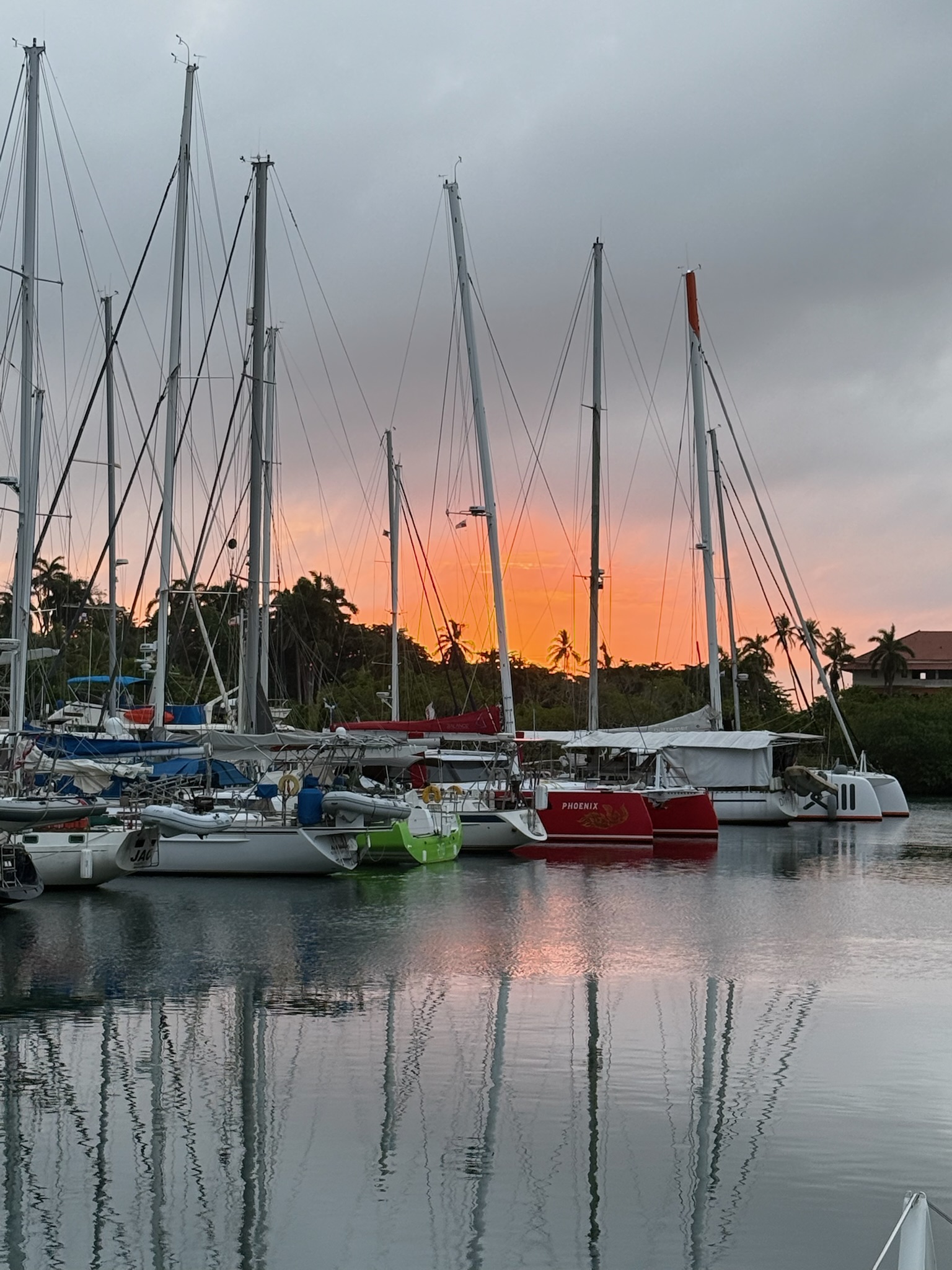
We decided to keep the car for another day to go to the town of Portobelo, which was about 80 km (50 miles) away from the marina. Portobelo was a small town with a nice bay and protected anchorage that was popular with the cruisers. It was a pivotal part of Spain’s colonial rule, so it was historically significant. Since we wouldn’t be going to Portobelo by boat, we thought it would be fun to go by car.
On our way out of Ft. Sherman, we decided to make a quick stop at the public beach. Since we’d driven by it so many times, we felt like we should at least stop and see it up close. It was a man-made beach, south of the Coast Guard base, along the road to the bridge. It was usually packed on the weekends. The US military had put in, and it was lined with more of the same housing structures that we’d seen at the loop… except these were in much worse shape.
We parked in the small parking lot and ventured in. Maybe it was the gloomy weather, but the beach felt sad. There were dilapidated buildings, sunken ships and a lot of trash strewn around. Someone had put up a series of palapas, but most of them had fallen apart into hunks of debris that added to the trash.
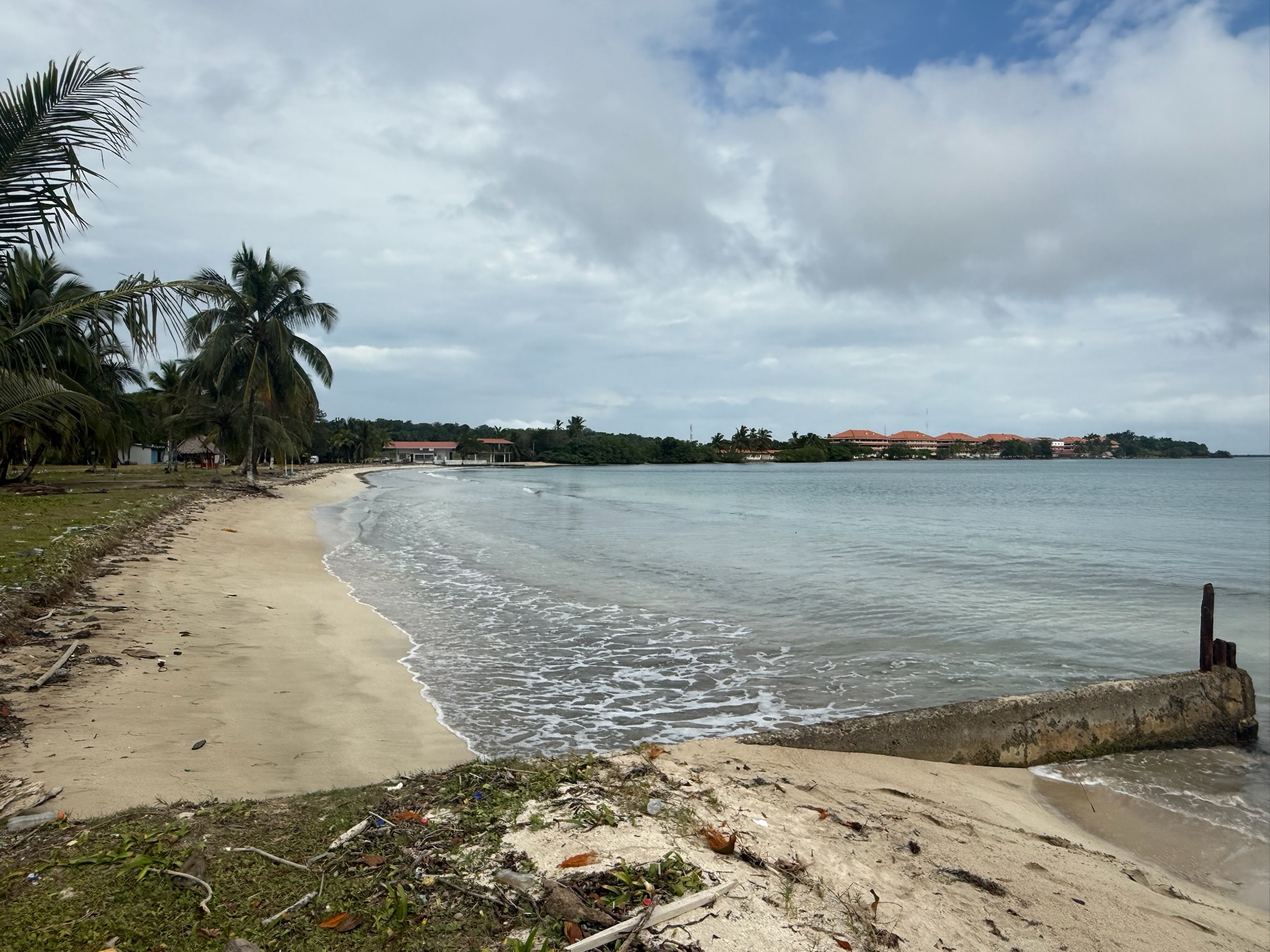
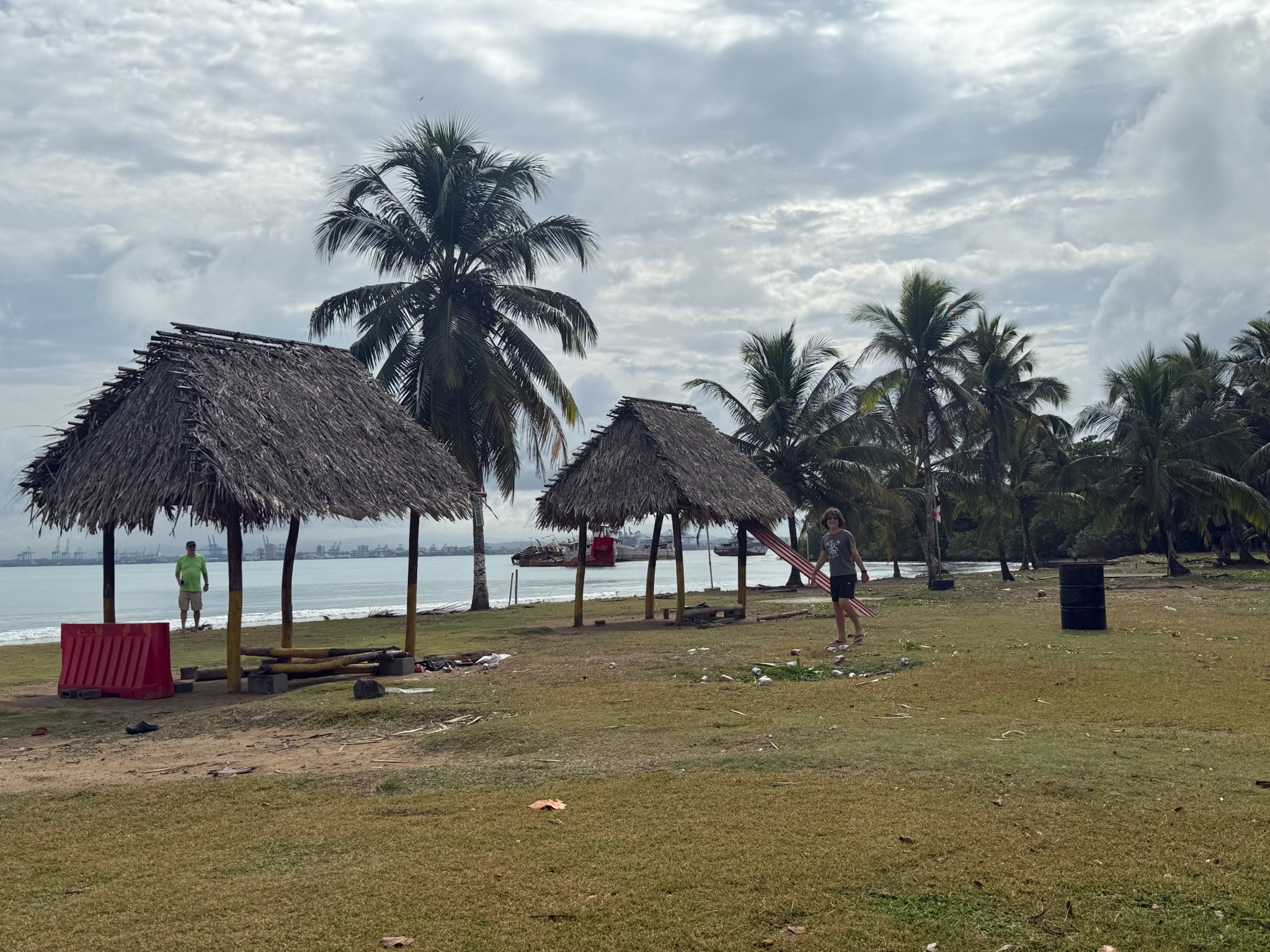
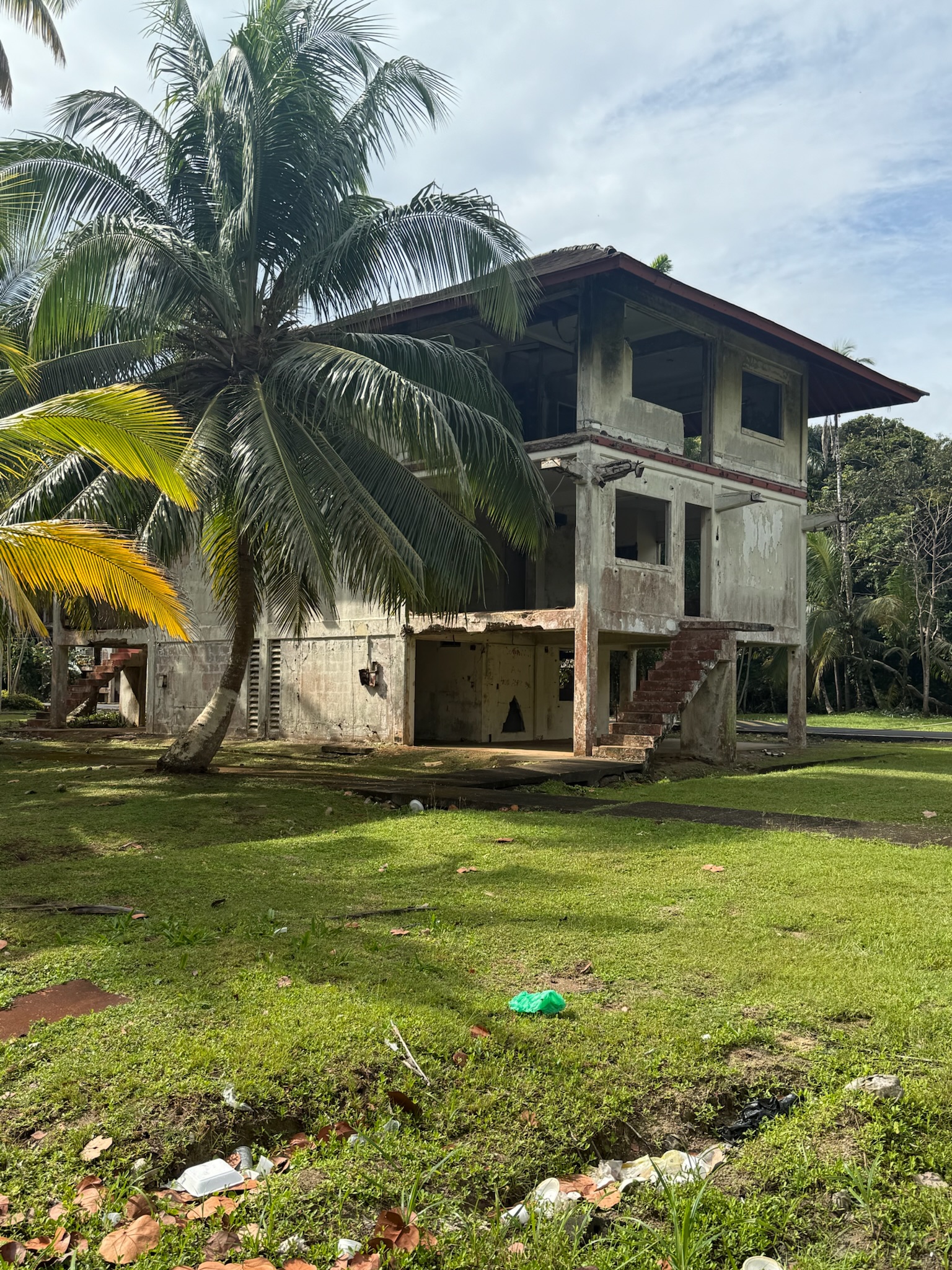
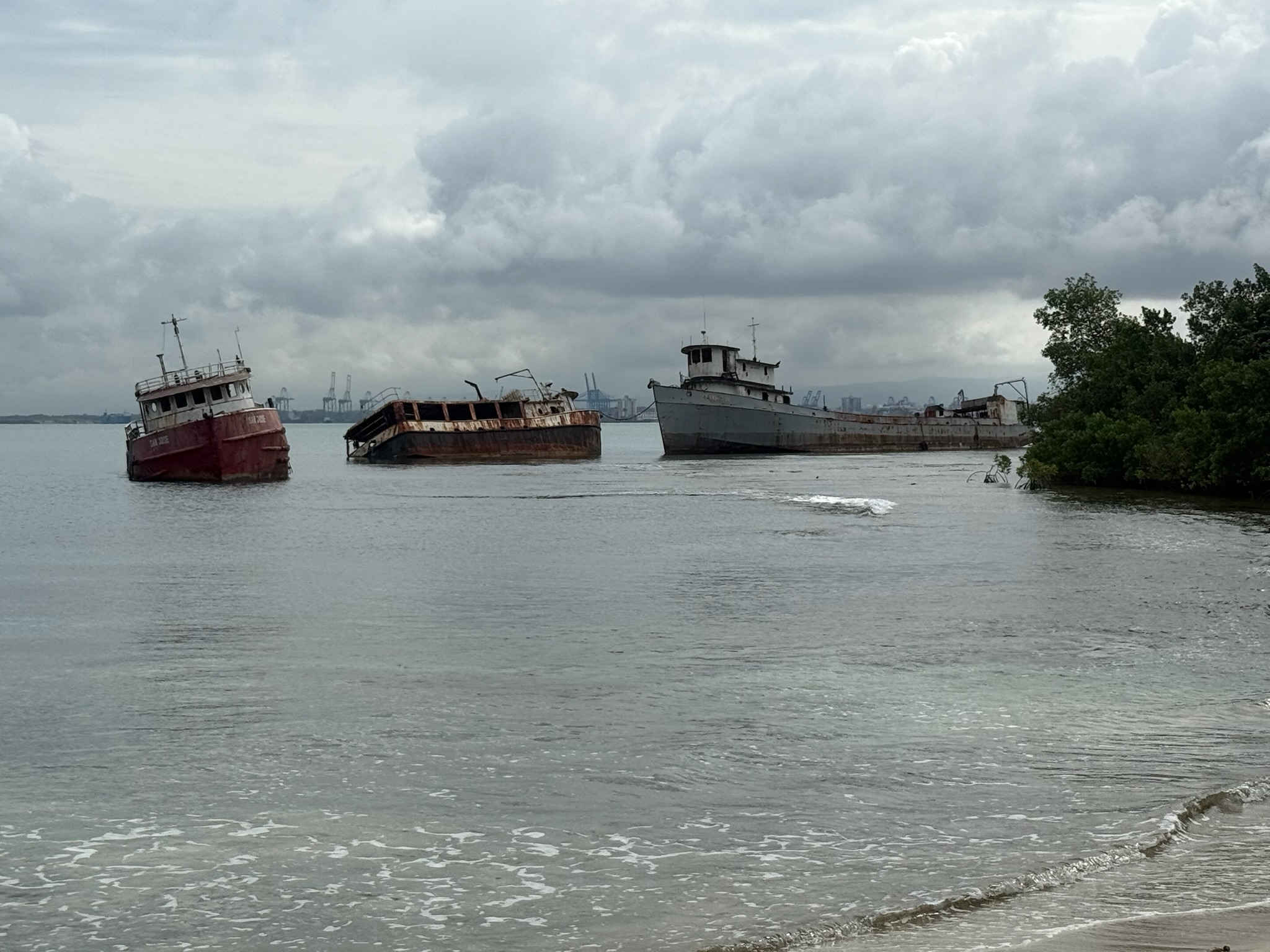
We hopped back in the car and continued on. Rather than taking the more direct route through the heart of Colon, we took the toll road for a few exits to the suburbs, then navigated to the two-lane highway that paralleled the coast.
The coast was developed the entire way, mostly with low houses, though there were a few big ones and a few hotels, too. We passed by a series of small towns. It took 1.5 hours to get there.
Our first stop was Batteria Santiago, the remains of one of the forts, which the cruisers had told us was on the edge of downtown. The ruins were along the main highway, and were clearly visible when we rounded a bend. Parking was free in a dirt lot next on the west side of the ruins. It looked like the parking lot also serviced a nearby dock. There were touts in the parking lot asking tourists if they wanted to take a boat ride to a nearby island.
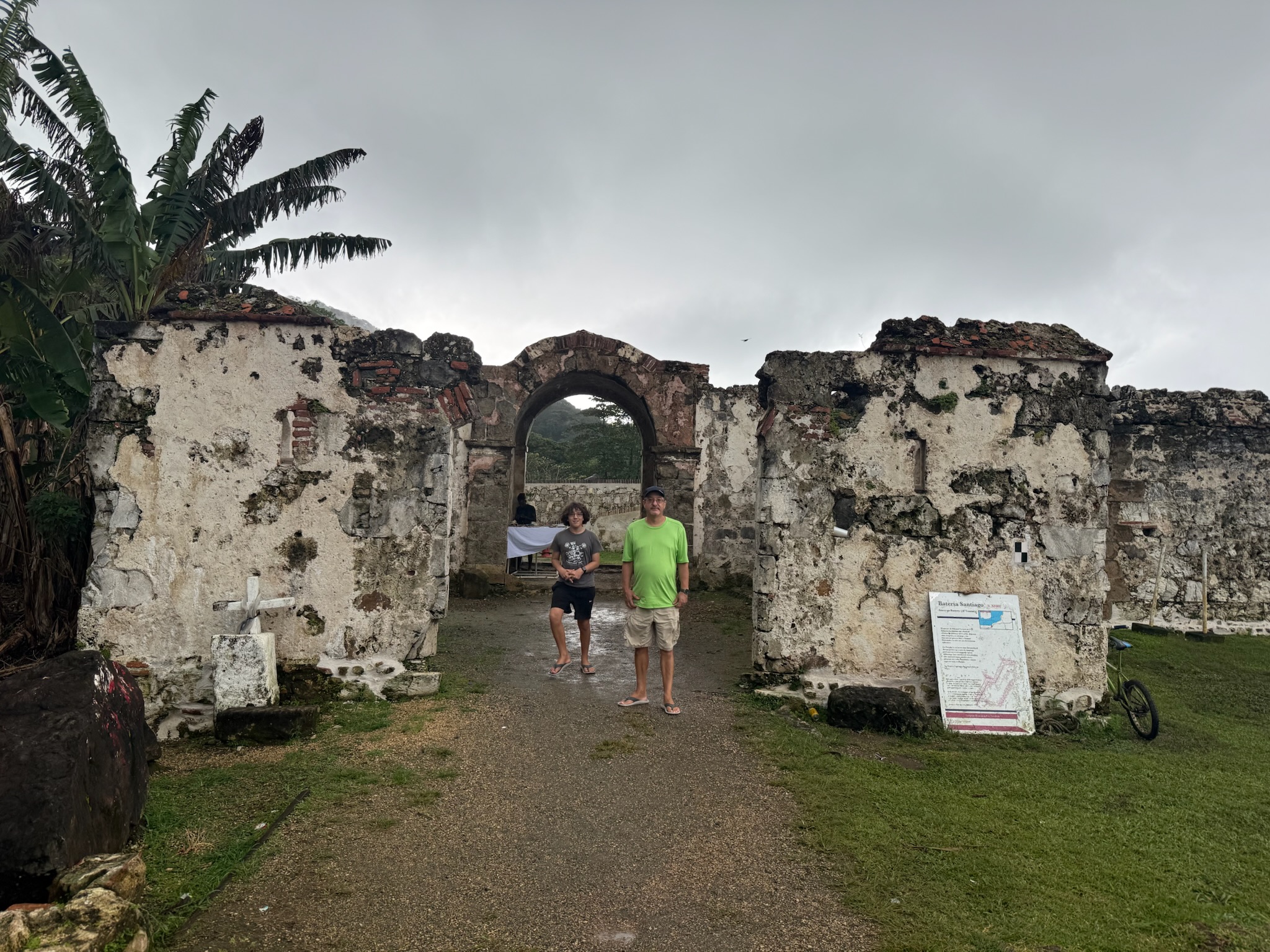
Apparently, the Spaniards had built three forts along this bay. Construction on the forts began in the late 1500s, about the same time as the Castillo de San Lorenzo. The Portobelo forts were named jointly with the Castillo as a UN world heritage site. We were unclear on whether there were still remains of the other two forts in Portobelo that we could visit.
There was no entrance fee – the ruins were wide open to the public to wander at will. If there were any signs posted beyond the one on the ground in the image above, we didn’t see them.
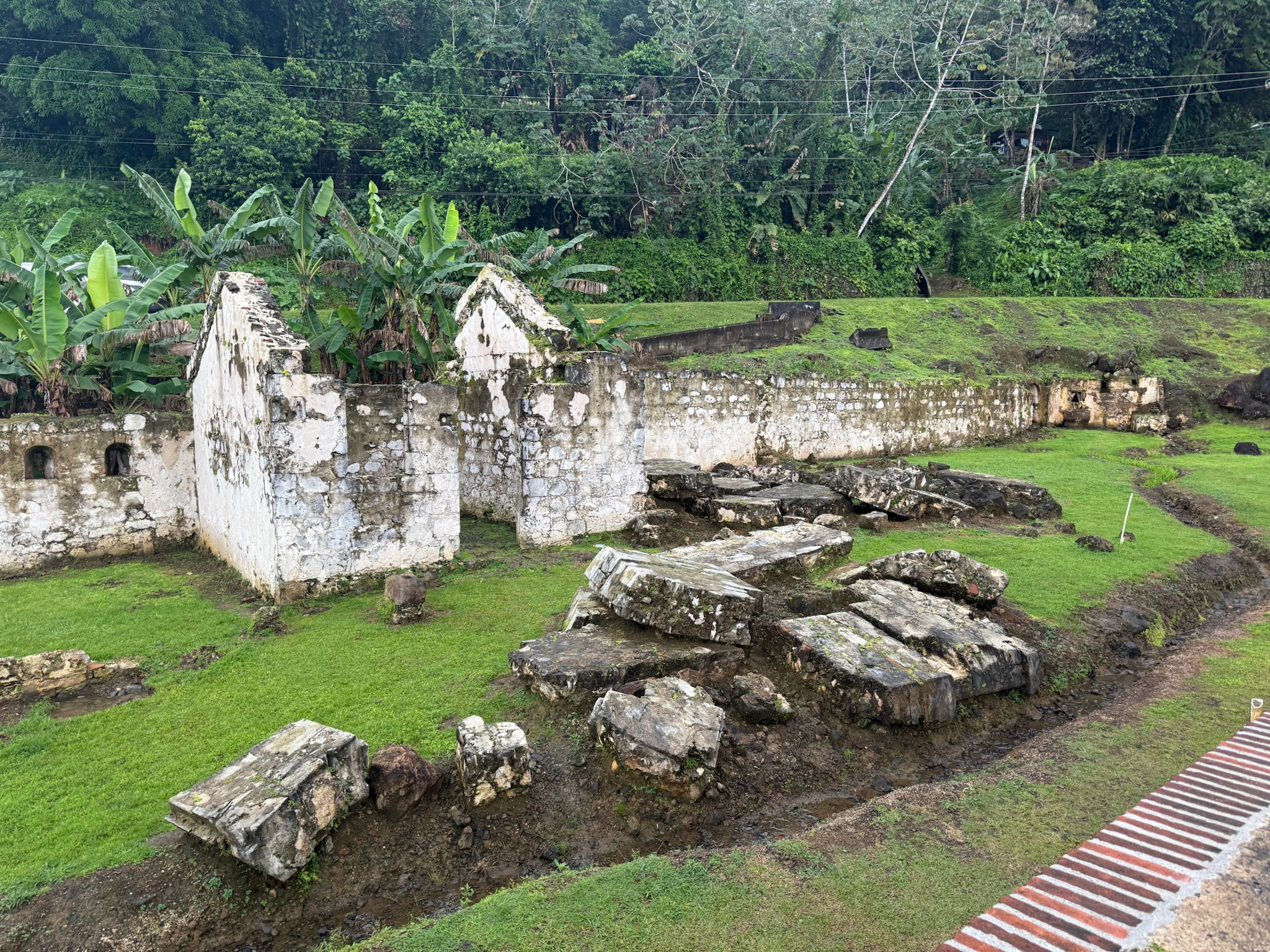

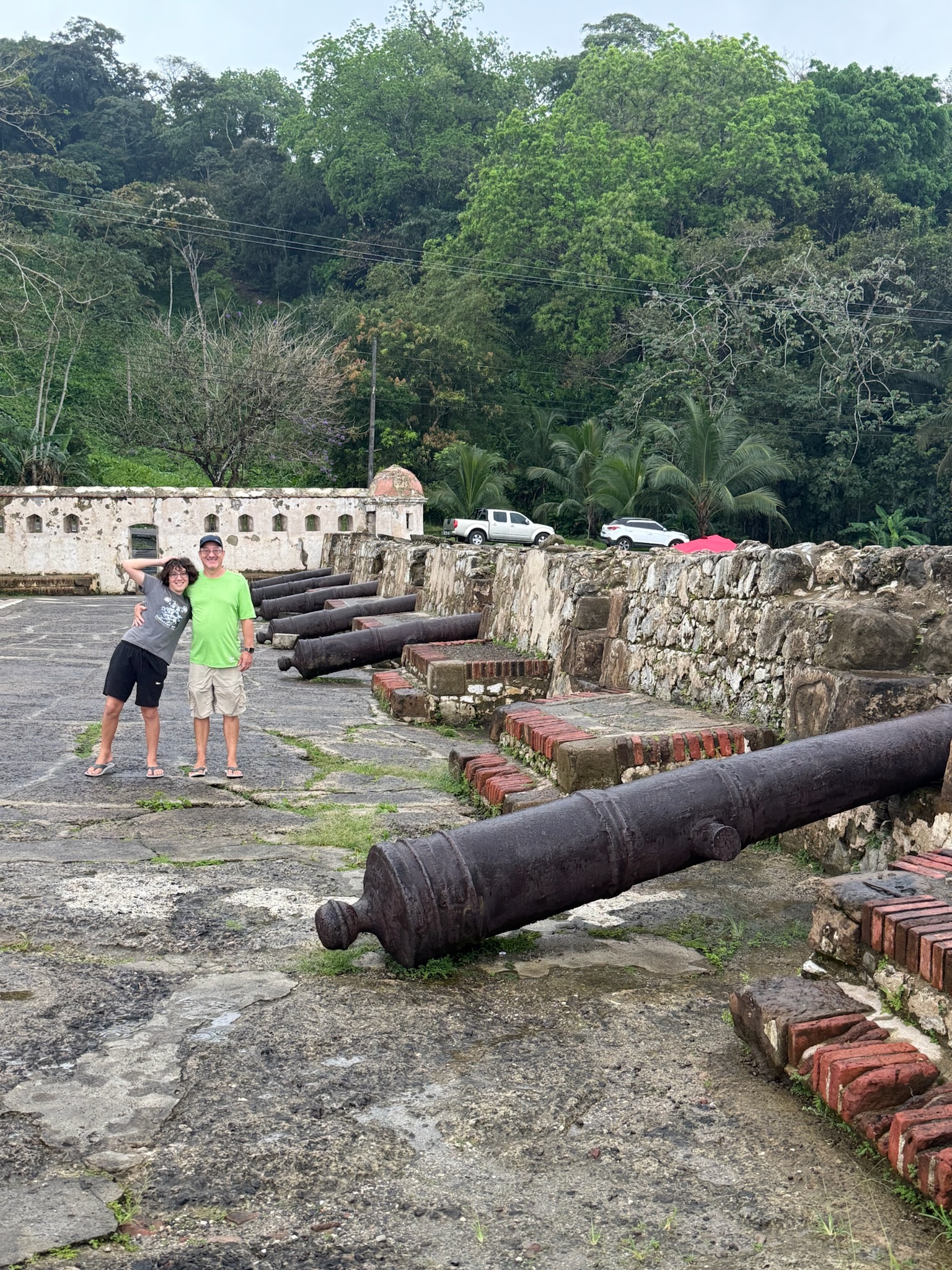
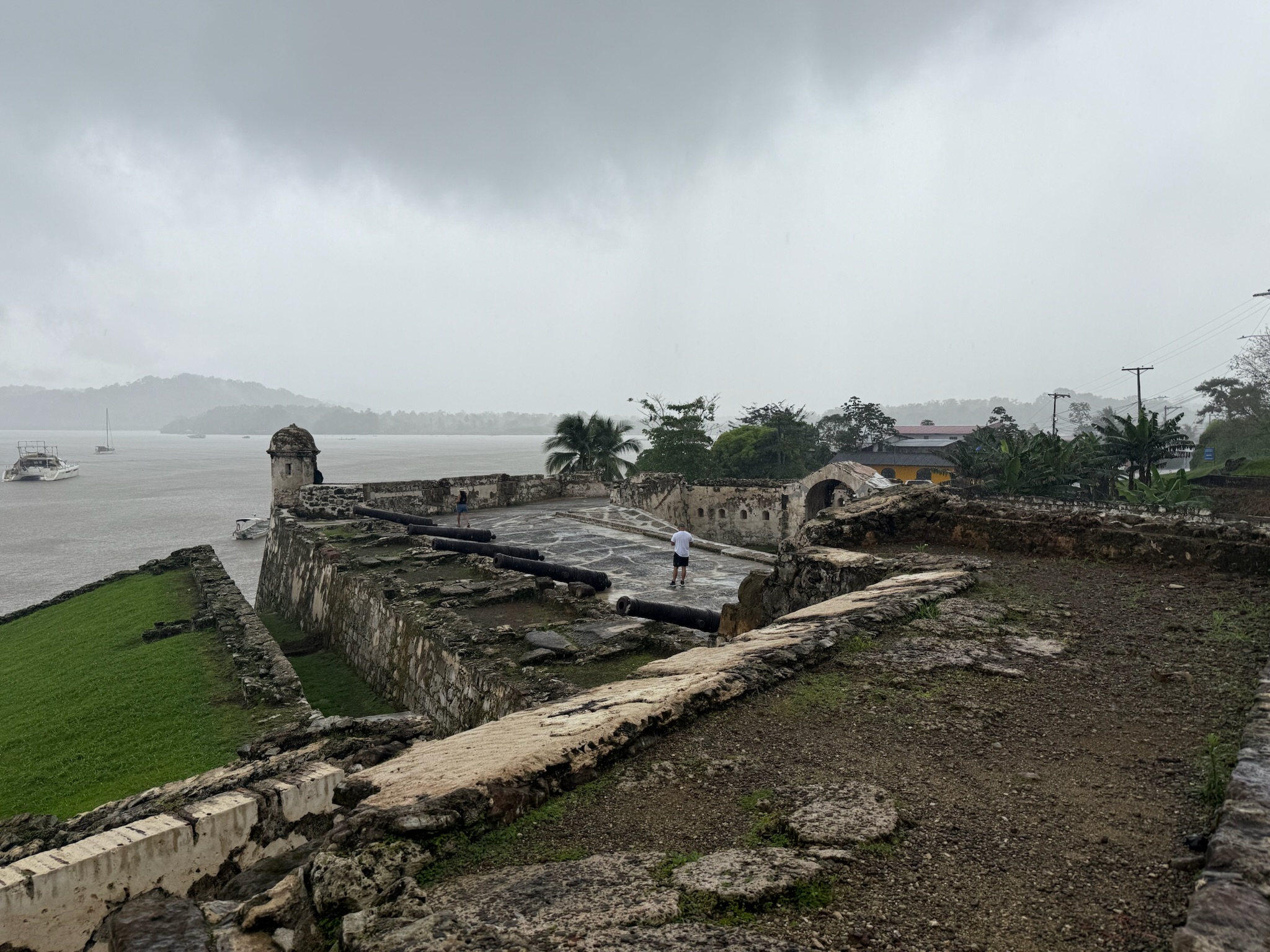

We were shocked to see that the majority of the structure was made from coral.

Shortly after arriving, it started to pour rain. We all took shelter under the east entrance doorway. Keith and Eric decided thy’d have better shelter in the guard turret on the west side, and ran right by the entrance to the indoor portion of the fort without even noticing it.
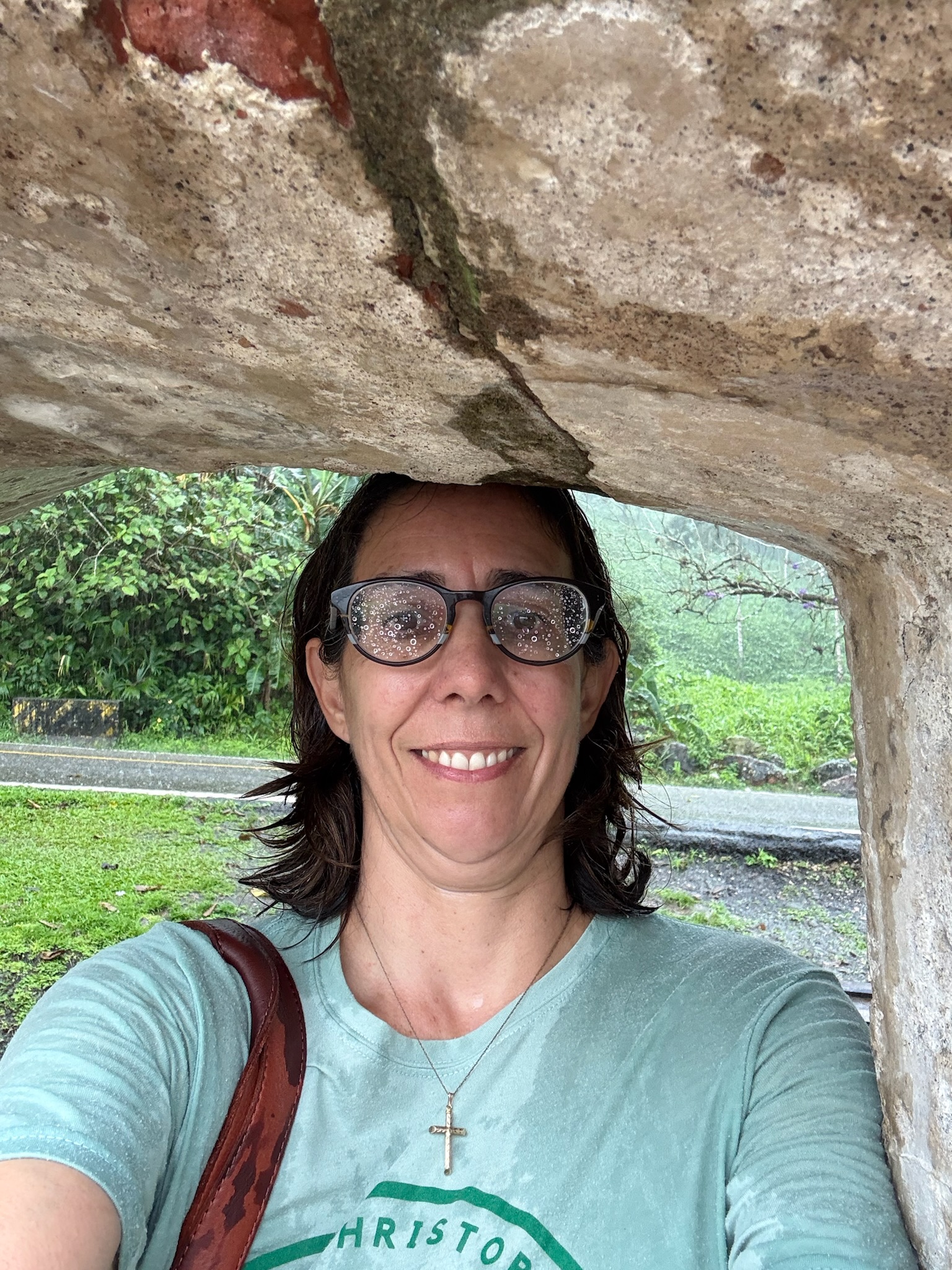
Heavy showers were common in Panama, and they usually didn’t last long. After waiting what seemed like forever (realistically, it was probably 10-minutes), Eric checked the forecast and saw that the rain wasn’t supposed to stop for the entire afternoon – in fact, it was only going to get heavier. Communicating via text, we decided to move on to an indoor venue.
As she was running to the car, Christi stopped to take a quick peek at the indoor portion of the fort. It was small — just three narrow hallways of varying lengths. But it was totally dry in there!
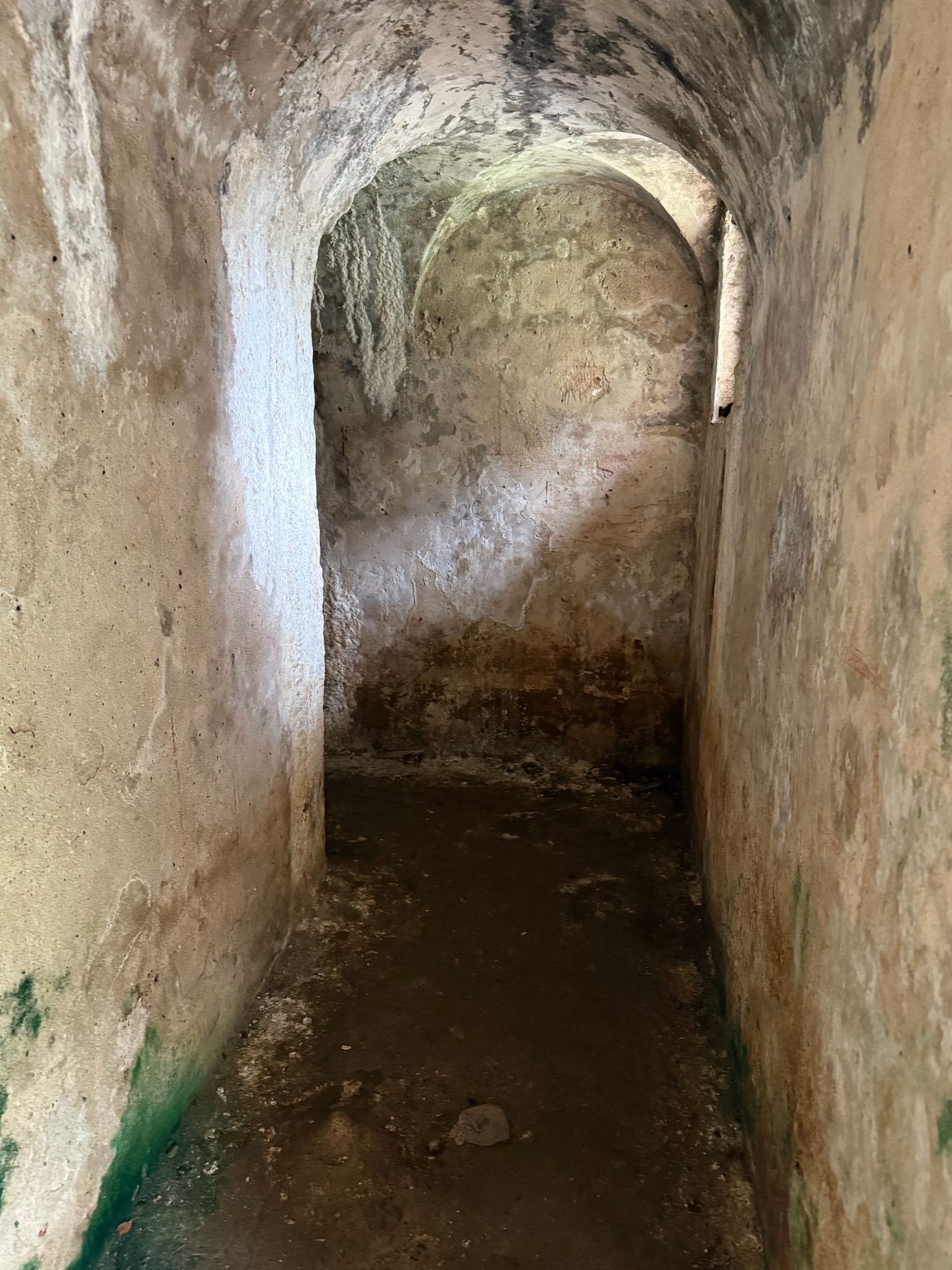
Our original plan had been the fort, lunch at a pizza place popular with the cruisers, the museum, the church, then walk around town. The pizza place was a little ways down the same road. Had it been a clear day, we would have happily left the car at the fort and walked, but we didn’t want to be walking around in such heavy rain… especially since there weren’t sidewalks.
It was about 1140 and the pizza place didn’t open until noon, so we drove to the church, which was famous for depicting Jesus as black.

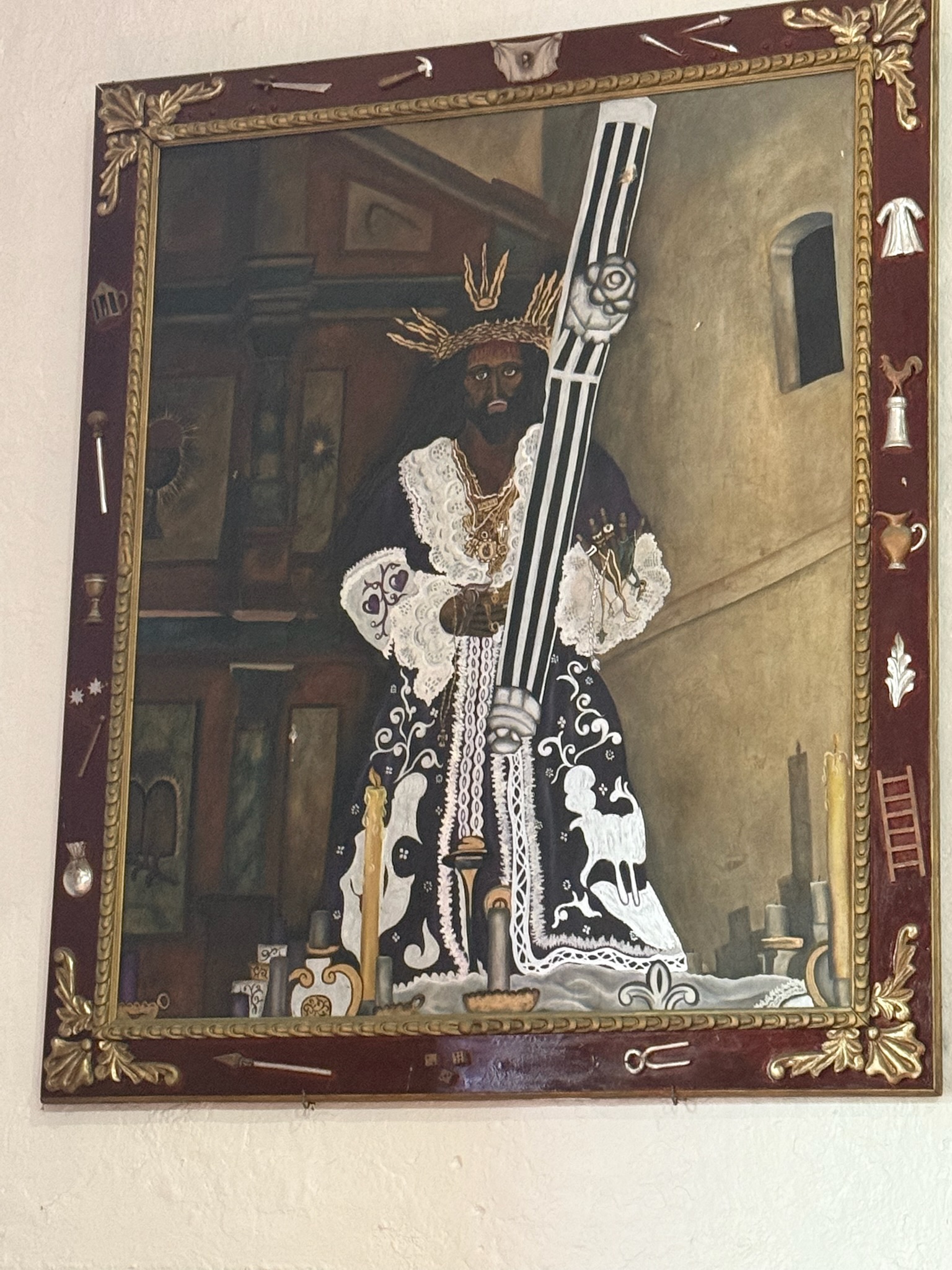
While there was parking at the church, we hadn’t seen any place to park in between the fort and church, which meant we’d need to walk back to the pizza place. We sadly decided that, if the rain was only going to continue to get heavier and heavier, we should err on the side of caution and drive back to the marina sooner rather than later.
The little bit of the town that that we’d seen was adorable – cute buildings painted in bright, cheerful colors. Thanks to a few wrong turns after leaving the church parking lot, we got to see some of the residential streets, as well. There were a lot of people out, completely unfazed by the rain!
The drive back was painfully slow. At various points in time, we got stuck behind a couple of buses and a couple of construction vehicles. Because the road was curvy and visibility poor, there weren’t many opportunities to safely pass.
We haven’t talked about the busses yet on this trip, though we did mention them 15-years ago. Panama was known for its public transit busses. They were the standard model of school busses used in the US when Eric and Christi were kids. They all had a white base paint covered with brightly-colored designs. Every bus was uniquely painted – some were simple stripes, and some were artistic masterpieces. Each had a name. One of the ways we’d been entertaining ourselves on our road trip was with the busses. Here was a photo of one of the buses that we saw in Panama City:
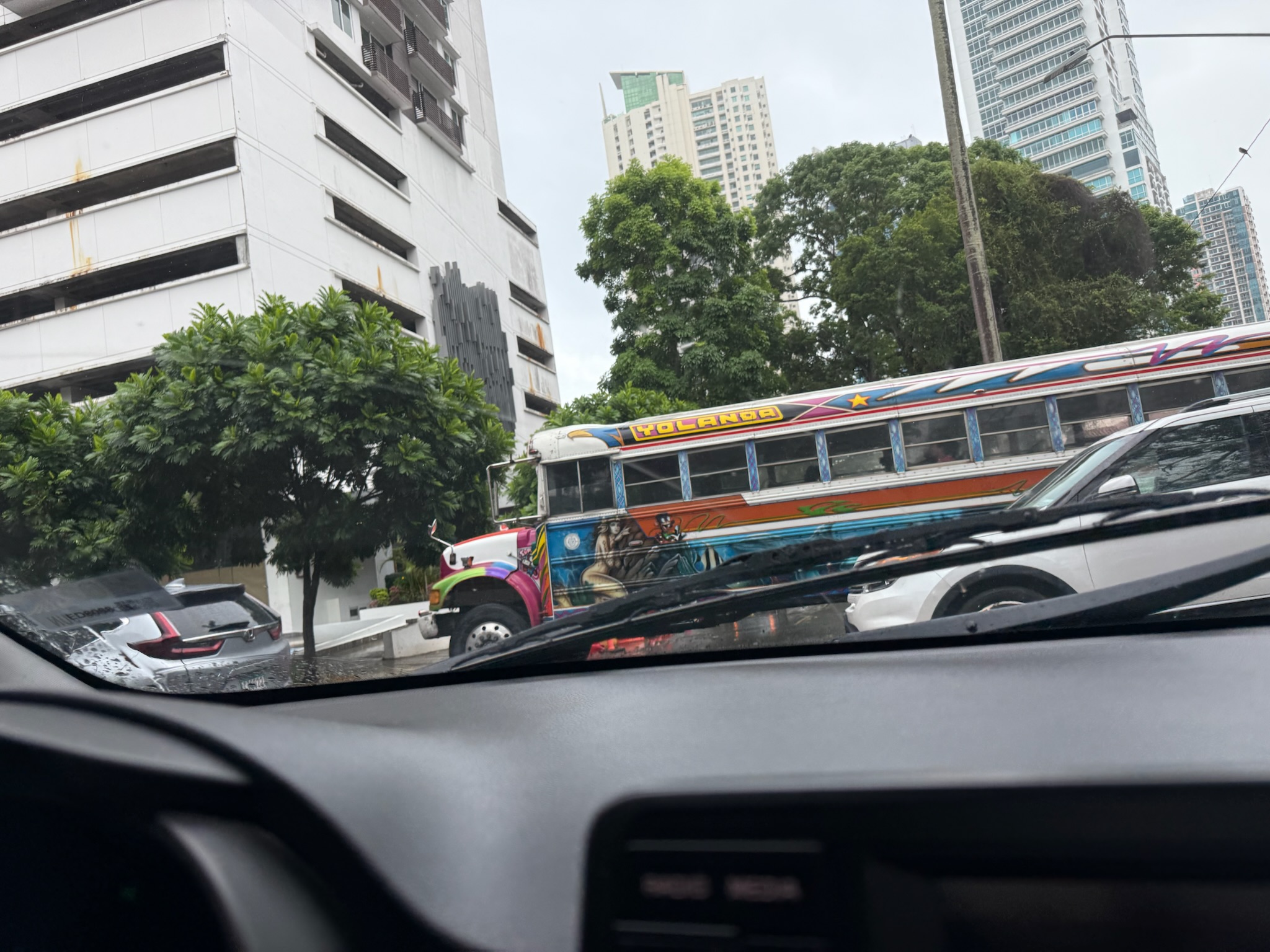
The busses were especially painful to be stuck behind as they were gross polluters. They let out copious amounts of very stinky, very black smoke. Since the road was so narrow, even when the bus pulled to the side of the road to let passengers on and off, there usually wasn’t enough room to pass. After being behind them for a while, we were starting to get concerned about carbon monoxide poisoning.
As slow as the return trip was, we’re happy to report that we made it to the shopping center with Rey without any problems. We had lunch in a restaurant called Toro’s Grill and more. Keith had ordered chicken fajitas, and he was disappointed to get pieces of chicken covered in barbeque sauce instead of the Mexican fajitas he’d been anticipating. We all agreed the food was good, but not great.
After eating, we went to Rey and stocked up on frozen foods, then headed back to the marina. In the evening, Keith went to the pool with his friends.

BBQ sauce on fajitas? The audacity! It’s funny how different Latin countries interpret Latin/Mexican cuisine. Spain did Mexican food really weird too. Enjoyed your pics of the ruins! So fun.